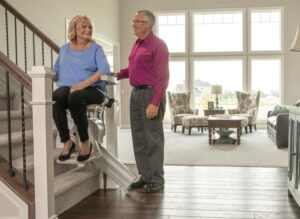

This is a big one. Everything from how you will get to the location, to getting around, to getting back home. Often, people with mobility issues will simply drive their own vehicle to a location or barring that, to the airport or train station. Wheelchair accessible vans and SUVs can help make the trip comfortable, and when you have your own vehicle, getting around your destination is less of an issue. If you cannot use your own vehicle for all or part of a trip, there are still options available. For instance, both Uber and Lyft have apps that allow you to book accessible rides to airports, hotels, and other destinations and there are a number of car rental companies that rent accessible vans to tourists and those traveling from out of town.
If you are planning to fly or take a train, make sure to specify your needs while making reservations. Many airlines, as well as Amtrak, have apps for your phone to help navigate the proper accessibility protocol information, or you can visit their websites as well for more information. While booking, you can often specify if you will need assistance boarding as well as list other concerns. Leave yourself sufficient time to get through any security checkpoints, and plan for any connections to have a buffer of time allotted to allow you time to get to the next leg of your trip with less stress and rushing. While usually being the first to board, wheelchair-bound passengers are also the last to disembark. Remember while planning to determine how to not only get to the airport or station, but also how best to return home.
Once you reach your destination, it is important to make certain that your temporary home away from home also meets your needs. To begin your search for appropriate lodging accommodations on your trip, once again think about what you do when you are at home. Where do you have equipment? Make sure that the bathroom, sleeping area, and any other living space will meet your needs; furniture should not impede movement – and should be easy to use, closets should have storage space that is easy for you to reach, desks and tables should be a height that is appropriate for you, there should be sufficient space around the bed, and the bathroom should be set up in a manner that supports your ability to use the facilities with no more assistance than you would expect to have available.
Be sure to ask about van accessible parking, doorway dimensions, the height of light switches, elevators and/or vertical platform lifts, wheelchair ramps and handrails throughout your hotel room. It may also behoove you to look online to see if mobility accessibility equipment can be rented locally if needed.
If you book your stay online it is not sufficient to go by the mention of “wheelchair accessible” as a guarantee that your room or hotel is designated as “accessible” for your need. Even with ADA compliance laws, “accessible” is a broad term. It is advised to contact the hotel directly to see what they offer specifically related to your accessibility needs. Always compile a list of your needs, to reduce the likelihood of an unpleasant surprise upon arrival. Include the common areas of the hotel in your inquiries, as a part of your experience may include the need to use them. Take excellent notes about who you speak to, what is agreed upon, and ask leading questions to get precise information. Finally, double-check that the accessible room is guaranteed – and reconfirmed with the hotel before you depart on your trip to make sure there are no issues upon your arrival. It is also suggested to follow up all phone conversations with an email to the reservations department so that all your needs are documented and there is no room for error due to misinterpretation or misunderstanding.
No matter why you are traveling, it is important that your mobility needs continue to be met. Having a plan for transportation is key. If you plan on taking public transportation, inquire ahead about accessibility. Many larger cities have apps available for both iOS and Android that help you locate facilities such as accessible restrooms and public transportation options, so that relevant information is available when you need it.
We advise that you travel with replacement parts or have access to them, if needed. It is also helpful to check for local accessibility device repair locations to see what options are available for people traveling from out of town.
Visit the websites of all planned destinations. Once again, try to get clarity around what “accessible” means to the location. Remember to check for accessible van friendly parking, door width, presence of wheelchair ramps, elevators, and lifts and other features that are relevant to your enjoyment and use of the location. If the website is not specific, contact the location directly, and ask them questions that will elicit detailed responses about their facilities.
Finally, many online mapping tools have information supplied by actual users as to the true accessibility of a location. It is worth checking mapping software and reading reviews to gain additional information about how accessible a location really is.
Keep in mind that there are companies that specialize in tours for people with a variety of mobility limitations and that as a part of using their services, many of these concerns are often worked out for you well in advance. Check online to find such tour companies, as there are a few of them.
It is possible to enjoy travel, even if mobility is an issue for you. With the information available online, and some detailed and thoughtful planning, you may find that traveling with mobility limitations is not hard and you can start traveling more often than you initially thought possible.

Click the link to view our available vans!
To help with the journey of independence. We have become an industry mobility leader from wheelchair ramps, stairlifts, mobile scooters, vertical platform lifts, scooter lifts and so many more products, we have for.
